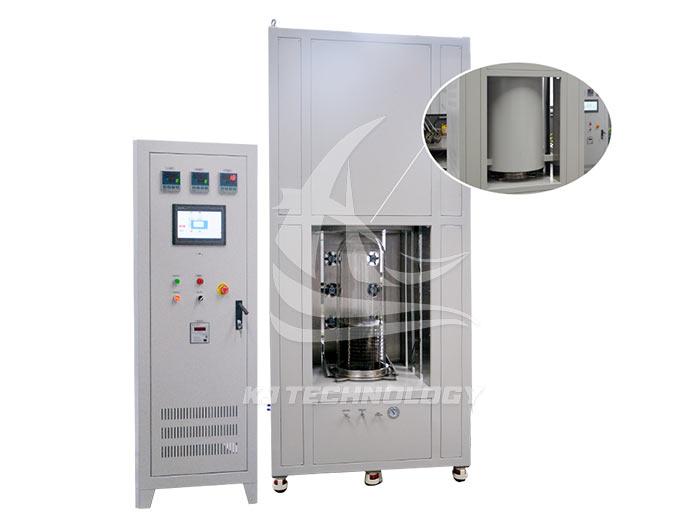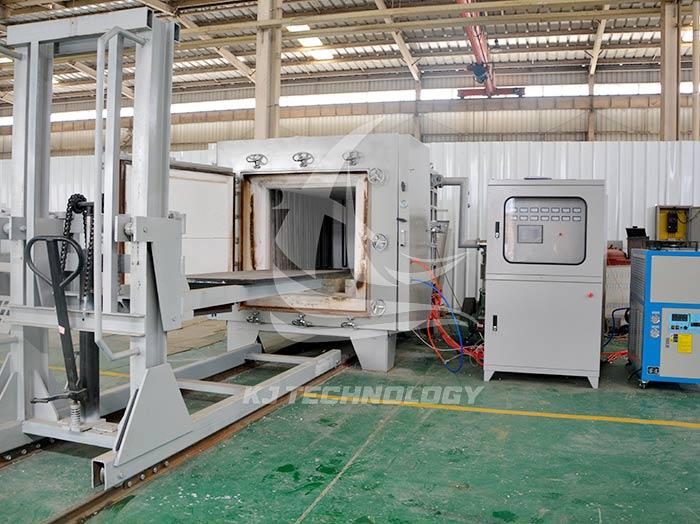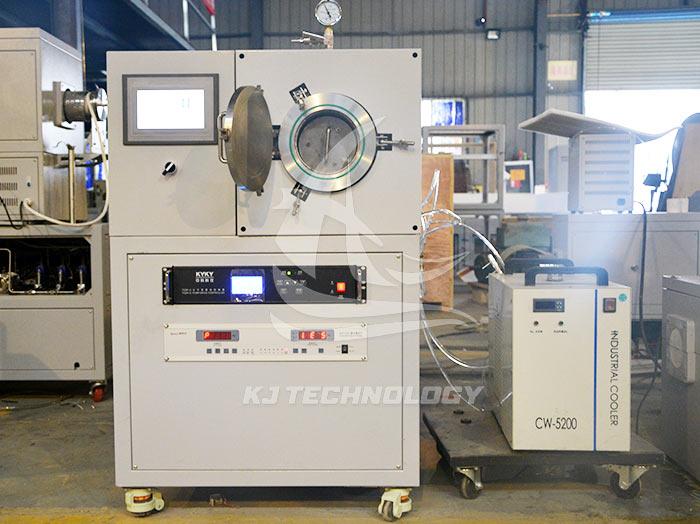Precautions for maintenance of high vacuum hot press furnace
 07-18-2025 Author: KJ technology
07-18-2025 Author: KJ technology
As a precision heat treatment equipment, the maintenance of high vacuum hot press furnace needs to revolve around four core aspects: daily cleaning, regular maintenance, special inspection of key components, and standardized operation management, in order to extend equipment life and ensure process stability. The following are specific maintenance precautions:
1. Daily cleaning and inspection
Furnace cleaning
Frequency: After each batch of processing or after daily use.
method:
Use a vacuum cleaner or soft bristled brush to remove residual powder and debris (such as silicon carbide, graphite, etc.) from the furnace to avoid metal particles scratching the inner wall.
Prohibit strong acid and strong alkali cleaning agents to prevent corrosion of furnace materials (such as stainless steel and molybdenum alloy).
Case: A certain enterprise failed to clean the metal debris in the furnace in a timely manner, resulting in a short circuit of the heating element and an increase of 20000 yuan in maintenance costs.
Vacuum system inspection
Vacuum pump oil level: Check the oil level before starting up daily, and replenish it if it is lower than 1/3 of the oil window.
Oil quality assessment: If the oil color turns black or contains water, it needs to be replaced immediately (usually every 500 hours of operation).
Pipeline leakage: Apply soapy water to the pipeline connection and observe for any bubbles, with a focus on inspecting flanges, valves, and other parts.
Appearance and safety inspection
Check if the equipment casing and control cabinet are damaged, and if the grounding wire is secure.
Confirm that the emergency stop button and over temperature alarm device are functioning properly (tested once a month).
2. Regular maintenance plan
Heating element maintenance
Graphite heating rod:
Check the resistance value every 3 months. If the deviation exceeds ± 10%, it needs to be replaced (refer to the equipment manual for the normal resistance value range).
Clean the oxide layer on the surface of the heating rod and gently sand it with fine sandpaper to avoid excessive wear and insufficient thickness (minimum allowable thickness ≥ 5mm).
Carbon carbon composite (CFC) heating plate:
Check the crack condition every 6 months. If the crack width is ≤ 0.5mm and the length is ≤ 50mm, it can continue to be used, otherwise it needs to be replaced.
To avoid thermal shock, the heating/cooling rate should be controlled at ≤ 50 ° C/min.
Deep maintenance of vacuum system
Diffusion pump:
Replace the diffusion pump oil every 1000 hours of operation, while cleaning the oil stains inside the pump body.
Check if the cooling water circuit is unobstructed, and control the water temperature at 15-25 ° C (excessive temperature can accelerate pump oil oxidation).
Molecular pump:
Replace the bearing grease every 2000 hours to avoid vibration caused by bearing wear.
Regularly clean the pre filter of the molecular pump (every 500 hours) to prevent large particles from entering the pump body.
Hydraulic/pneumatic system maintenance
Hydraulic oil:
Replace the hydraulic oil and clean the oil tank and filter element every 2000 hours of operation.
Check the oil cylinder seals and replace them promptly if any leaks are found (polyurethane seals are recommended as they have better high temperature resistance than nitrile rubber).
Pneumatic pipeline:
Check the aging condition of the trachea every quarter, with a focus on inspecting the bends and joints. If there are cracks or bulges, they should be replaced immediately.
Adjust the air pressure regulating valve to ensure that the pressure is stable within the required range of the equipment (such as 0.4-0.6MPa).
3. Special inspection of key components
Thermocouple calibration
Frequency: Send to the metrology institute for calibration every 6 months (or use standard temperature for calibration).
Method: Insert the thermocouple into a standard temperature source (such as a dry well temperature calibrator), compare the displayed temperature with the actual temperature, and replace it if the deviation exceeds ± 1 ° C.
Case: A certain enterprise suffered a loss of 500000 yuan in order value due to the deviation of thermocouples causing the ceramic sintering temperature to be too low, resulting in substandard product strength.
Vacuum gauge cleaning
Frequency: Every 500 hours of operation or when the vacuum level drops.
method:
Close the vacuum gauge valve, disassemble the gauge, and clean the surface oil stains of the probe with anhydrous ethanol.
Avoid touching the probe directly with your hands to prevent static electricity from damaging sensitive components.
Attention: Pirani gauge and ionization gauge need to be cleaned separately. The former is suitable for low vacuum (10 ⁻¹ -10 ³ Pa), while the latter is suitable for high vacuum (10 ⁻⁴ -10 ⁻⁶ Pa).
Water cooling system maintenance
Water quality requirements: Use deionized water or distilled water, with a conductivity of ≤ 5 μ S/cm (to prevent scaling and blockage of the waterway).
Flow monitoring: Install a flow switch that automatically shuts down and alarms when the flow rate is below the set value (such as 5L/min).
Winter antifreeze: If the ambient temperature is below 0 ° C, ethylene glycol antifreeze (concentration 30% -50%) should be added.
4. Operation standard management
Process parameter record
Establish equipment operation logs to record parameters such as temperature, pressure, vacuum degree, and time for each batch of processing, in order to trace the root cause of problems.
Case: A certain enterprise found through analyzing historical data that fluctuations in vacuum degree were related to the wear of molecular pump bearings. By replacing them in advance, a major failure was avoided.
Operator training
Regularly organize training, with a focus on assessing the following:
Vacuum system pumping sequence (low vacuum first, high vacuum later);
Heating element heating rate control (to avoid cracking caused by thermal stress);
Emergency handling procedures (such as power outages, gas leaks, and overheating).
Spare parts inventory management
Establish a list of key spare parts, including:
Heating element (graphite rod, CFC plate);
Vacuum gauge (Pirani gauge, ionization gauge);
Hydraulic seals (cylinder seals, piston rings);
Vacuum pump oil, hydraulic oil.
Suggestion: Reserve spare parts procurement funds at 5% -10% of the equipment value to ensure that operation can be restored within 48 hours in case of failure.








